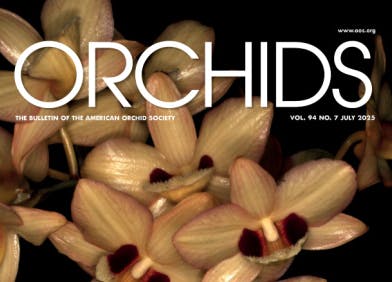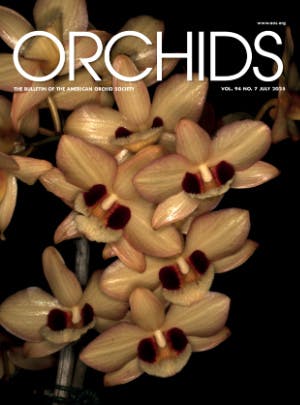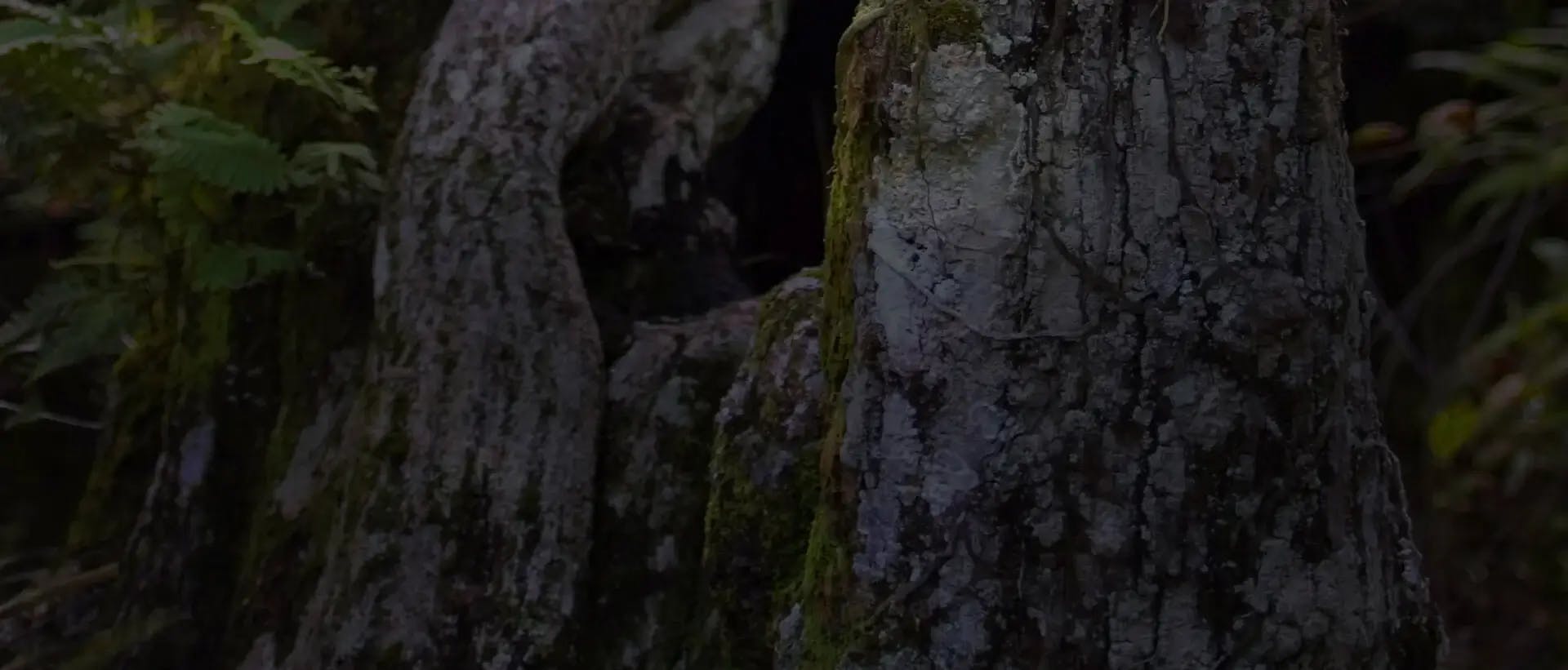
In the first part of this series (May), we discussed the general provisions that must be met to induce flowering. In general, there are two significant components to flowering, energy reserves and meeting the environmental factors to which individual orchids are adapted. Is my plant physically mature enough to bloom. Is it large enough to build up reproductive reserve energy? A good root system is absolutely critical to this. Once these needs are met, a collection of environmental factors, depending on the genus, comes into play. These include: diurnal variation between day and night temperatures, absolute day and night temperatures, seasonal variation in day length, seasonal variation in light levels, and seasonal variations in water availability.
Last month, we discussed these requirements in the genus Phalenopsis, including the need for coolish nights in the large-flowered group of species and hybrids. The genus Cymbidium is another with a substantial collection of species and hybrids whose flowering is tied to seasonal temperature variations.
As a general rule, the farther north and higher the elevation of the species natural habitat, the more pronounced is the need for cool night temperatures. The hybrids from this group have often been referred to as “California” cymbidiums because so many of them are grown along the California coast. These plants produce large, more or less round flowers on tall inflorescences, and are generally big plants. The species that make up this group are native to the foothills of the Himalayas. They initiate inflorescences with the advent of chillier nights as summer ends and fall begins. These plants generally need nights in the 50s F (around 12.8+/- C), depending on the parentage, as early as mid-August and can be difficult to flower well in areas where nights do not cool off until well into fall or even early winter. Many of them have an additional requirement that the day length must begin to increase before the buds will open. This has made it historically difficult for hybridizers to produce high-quality fall-blooming hybrids, although today’s early-blooming hybrids now rival the quality of the classic midseason bloomers. The keys to success with this group of cymbidiums are to leave them outside for as long as possible (they will not be harmed with night temperatures even as low as 40F [4.4 C]), bringing them in only once inflorescences have begun to develop and keeping them cool during bud development to avoid blasting of the buds.
[1] Cymbidium Darrel Wong ‘Dos Amigos’ AM/AOS (Lambert Day × Karen Hawaiian); exhibitor: Pierre Pujol.

The introduction of species from section Jensoa, often referred to as “Asian” cymbidiums has allowed the development of much more easily flowered hybrids that substantially lack this need for cool nights. These include Cymbidium sinense and Cymbidium ensifolium and are generally much more warmth-tolerant. They do not need the early fall cool nights to initiate flowering and appear to be more influenced by day length. Cymbidium Golden Elf (ensifolium × Enid Haupt) combines both these groups and has gone on to parent a wide range of hybrids that maintain the warmth tolerance of the Jensoa section with larger, fuller flowers.
[2] Cymbidium ensifolium ‘Bull Market’ HCC/AOS; exhibitor: Ken and Amy Jacobsen.

[3] Cymbidium Golden Elf ‘Machiavelli’ AM/AOS (ensifolium × Enid Haupt); exhibitor: René E. Garcia.

[4] Cymbidium Milton Carpenter ‘Everglades Gold’ JC/AOS (Golden Elf × Via Ambarino); exhibitor: Bayard Saraduke.

[5] Cymbidium canaliculatum ‘Phyllis’ AM/AOS; exhibitor: Paul Chim. [Robert Stillman]

[6] Cymbidium madidum ‘Leroy’ AM/AOS; exhibitor: Orchids Limited, International. [Richard Clark]

[7] Cymbidium devonianum ‘Sycamore Creek Beauty’ AM/AOS; exhibitor: Bill Robson. [Pinkers]

[8] Cymbidium Jacqueline Hatfield ‘Candice’ AM/AOS (David Teuscher × Memoria Amelia Earhart); exhibitor: Hatfield Orchids. [Brandon Tam]

Several hybridizers are now developing hybrid lines using decidedly tropical species such as Cymbidium canaliculatum, Cymbidium madidum (both Australian) and Cymbidium devonianum which also have much more warmth tolerance and less dependence on cool nights to flower. An added bonus is that these hybrids have pendent inflorescences creating stunning hanging specimens.
— Ron McHatton, AOS Chief Education and Science Officer, Editor (email rmchatton@aos.org)












